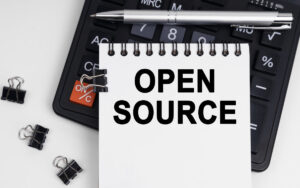Project management is a necessary practice without which it’s difficult, if not impossible, for modern enterprises to plan, execute, and complete projects effectively. A project management office (PMO) is a centralized hub for providing support, guidance, and standards for project managers, ensuring that projects are completed efficiently, on time, and within budget.
Those with project management skills are highly sought after for their expertise in setting up and running a PMO. If you want to join this amazing tribe of project managers, you’ve landed in the right place.
In this article, we will explore the concept, benefits, and best practices of a PMO and discuss the role of a reputed project management course in imparting the crucial skills required to thrive in this field.
What is a Project Management Office?
A project management office is a team of professionals overseeing the overall governance of a company’s project management standards. The PMO determines organizational requirements, defines the standards that can satisfy them, and manages project compliance with the standards of the organization’s projects.
This is especially necessary as project managers often work on more than two projects, with about 60 percent handling two to five projects simultaneously. A PMO helps streamline each project so that every project gets its due with zero confusion and overlap. This ensures that no project falls through the cracks, and over 89 percent of organizations have established PMOs for their projects.
How Does a PMO Add Value to a Company?
A project management office ensures every project runs smoothly and helps manage and track all projects from a central point. Organizations gain several great benefits from a PMO, such as those described below.
- PMO standardizes the project management processes and ensures no random order or missed steps in any project.
- It helps enhance the accuracy of the project budget, schedule, and resources.
- PMO improves the financial bottom line by ensuring minimal resource wastage and project delays.
- Appropriate decision-making is possible as a project management office uses a data-driven approach to iron out issues and arrive at the most important metrics defining the scope and feasibility of the project and related tasks.
- A central group such as the PMO helps track the progress of all the organization’s projects and can contact individual project teams in case of any conspicuous delays or issue alerts.
- In huge organizations, employees may face difficulties obtaining the required resources within the project timeframe. The PMO has a bird’ s-eye view of resource allocation across the organization and can purchase or redirect resources to the teams in need.
- The PMO continuously supports the project teams from project planning to project completion and delivery.
A job-ready project management bootcamp trains you in key concepts that help you reap these benefits.
Also Read: What is Project Resource Management? Everything You Need to Know
PMO Best Practices for Organizational Success
As a member of the PMO, you are expected to be the connecting link between the top management and the multiple project teams running in the organization. Here are some best practices for spectacularly fulfilling this role.
- Acquaint yourself with the enterprise’s strategic goals and organize the PMO to align with the objectives.
- Explore techniques and tools to efficiently monitor projects and help prioritize and select those requiring immediate or major assistance.
- Implement the most suitable project methodologies to gain maximum output.
- Ensure that the stakeholders know the project’s progress and that an efficient communication channel exists between them and the project team.
- Adopt efficient monitoring of resource allocation and usage. Set up alerts to flag waste or overuse of any resource. Communicate with the teams to understand their requirements and inform them of resource waste.
How to Measure PMO Performance
Project management office performance is required to ensure that this core group effectively tracks and maintains your organization’s project management standards. One key method used to measure this performance is to define the goals for the PMO and the key performance indicators (KPIs) and metrics for the projects, collect the data from the project teams, and calculate the KPIs and metrics.
Next, you can establish the benchmarks for the KPIs and metrics and compare the ones for your PMO to the benchmarks. This helps quantify efficiency.
Finally, you can set up controls and trackers to automate this calculation, sending alerts when the value exceeds the minimum required benchmark. This will ensure that the performance is regularly tracked and not measured biannually or quarterly as a separate exercise.
We will now discuss the KPIs and metrics to help measure your PMO performance. However, first, let us distinguish between these two terms. In general, both KPIs and metrics quantify certain project aspects. So, technically, every KPI is a metric that can be used to observe how close the PMO is to achieving the goals. However, not every metric is a KPI. Some metrics are used only for regular tracking of process efficiency. They need not necessarily indicate the achievement or progress toward the project or organization’s goals.
With this in mind, let us review major KPIs defining project management office performance.
- Return on Investment (ROI): This KPI is crucial for calculating the financial implications and returns obtained from the projects. As the PMO is responsible for allocating budgets, tracking spending, and checking resource wastage, a good ROI indicates that the PMO has been efficient in preventing losses and enhancing the financial bottom line.
Formula to calculate ROI:
ROI = (Net Profit/Total investment) * 100
- Cost savings: This KPI indicates the efficiency of the PMO in directing the project team away from potential losses or working with them to recover the waste of resources. You can calculate this KPI as follows:
Cost savings = Planned budget – Actual cost
- Earned value (EV): Earned value indicates the proportion of the project completed based on its scope, costs, and timelines with respect to the initial budget. It can be calculated using the following formula:
EV = percentage of project completed * Initial planned budget
- Cost performance index (CPI): The CPI gives the project profitability with respect to the budget usage. It uses the KPI of earned value for calculation, as shown below:
CPI = Earned value (EV) / Actual cost (AC)
- Resource utilization rate: Efficient resource acquisition, allocation, utilization, and loss prevention are crucial to improve the project productivity and output and detect gaps and employee issues. You can use the formula below to calculate this rate:
Resource utilization rate = (Actual work hours / Available work hours) * 100
- Customer satisfaction (CSAT): CSAT is the average score given by the customers for the services provided. It is calculated from the scores obtained in end-of-service surveys. The formula to calculate CSAT is:
CSAT = (Total sum of scores / Total number of responses) * 100
Further, some metrics provide insight into the processes indicating project completion and performance.
- Project alignment with organizational goals: This metric indicates how well the goals are framed with the goals in mind. This is crucial as mismatched goals can lead to confusion and random project progress. You can calculate this metric as follows:
Project alignment = percentage of projects aligned with organizational goals.
- Project completion: Efficient project completion is a great metric to measure how well the project management office has supported multiple projects. This metric can be calculated in more than one way, as shown below:
Project completion efficiency = percentage of projects completed within budget
Productivity = (Number of projects completed in the current financial year / Number of projects completed in a previous financial year) * 100
Timeline efficiency = percentage of projects completed on time
- Auditing and review: PMO has to ensure that not only are the projects completed on time, but they are completed efficiently with quality output. Hence, monitoring the rejection rates, issue status, and audit results is essential. You can calculate this metric in the following manner:
Output efficiency = percentage of projects with a minimum rate of deliverable acceptance
Earned value achievement = percentage of projects achieving the earned value per month
Issue closure = Number of open issues per month
Audit output = percentage of projects audited at major milestones
Review = percentage of projects with post-project review above a certain benchmark
- Stakeholder satisfaction: Customer, project manager, and stakeholder satisfaction is a critical metric for gauging the proficiency of the project management office in ironing out issues and streamlining project completion. Here’s how you can calculate the PMO’s performance based on customer satisfaction.
Satisfaction score = percentage of projects receiving an above average CSAT based on a survey conducted where customers give their feedback
PM satisfaction score = the percentage of projects with an above-average score based on a survey in which project managers rate their satisfaction with the project.
Also Read: Best Apps for Project Management You Should Know in 2024
Upskill to Advance Your Career in a Project Management Office
Being part of a PMO can be a rewarding experience as you play a pivotal role in driving successful projects and contributing to the growth of your organization. To excel in this role, you must have a solid foundation in project management methodologies, tools, and techniques and good communication skills. If you are a strategic thinker, possess analytical prowess, love solving problems, and have strong leadership qualities, this could be your ideal career.
Join our project management program to build a solid foundation and hone such skills. This course, specially curated by industry experts, will acquaint you with concepts such as PMP®, Agile Scrum Master, Microsoft Project tools, and implementing a PMO. You will work on industry-relevant capstone projects that show how to apply these skills in the real world.
Ready to jumpstart your learning in project management and carve the path to your dream career? Enroll now!
Frequently Asked Questions
- How do you run a successful PMO?
You can run a successful project management office by following certain steps, such as planning the venture, acquiring top-management support, establishing the scope of the PMO, choosing the 4Ps of the PMO and the most suitable model, implementing the model, getting the required resources, and arranging for necessary PMO training.
- What should a project management office do?
A PMO determines the project governance structure, generates management reports, tracks multiple projects, prioritizes them according to business goals, and manages resource acquisition and allocation.
- How can I make my project management office more effective?
You can increase the efficiency of your PMO by establishing smooth communication channels, managing project processes, implementing efficient tools, organizing training sessions as required, and ensuring agile project management.
- What is the role of a project management office in the organization?
The chief role of a project management office in an organization is to define, implement, manage, and maintain standardized project management protocols across the organization. This helps align the project goals with the organizational strategy and maximizes output.
- What are some key functions of a PMO?
The key functions of a project management office include efficient distribution of key strategic data, ordering projects as per the organizational goals, maximizing the cost benefits of the projects, and managing the project output.
You might also like to read:
How to Measure Project Success? A 2024 Guide
Remote Project Management: How to Manage Remote Teams Effectively
What are Project Management Skills? Here are Top Skills You should Know in 2024







